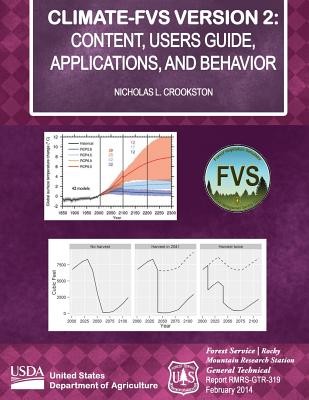
- We will send in 10–14 business days.
- Author: United States Department of Agriculture
- Publisher: CreateSpace Independent Publishing Platform
- ISBN-10: 1511825170
- ISBN-13: 9781511825177
- Format: 21.6 x 28 x 0.2 cm, softcover
- Language: English
- SAVE -10% with code: EXTRA
Reviews
Description
Climate change in the 21st Century is projected to cause widespread changes in forest ecosystems. Climate-FVS is a modification to the Forest Vegetation Simulator designed to take climate change into account when predicting forest dynamics at decadal to century time scales. Individual tree climate viability scores measure the likelihood that the climate at a given location and at a given point in time is consistent with the climate recorded for species' contemporary distribution. These viability scores are input into Climate-FVS. A web-based service is available for providing this input for climate predictions generated by down scaling general circulation model (GCM) outputs run using several models and scenarios from the IPCC third (IPCC 2000) and fifth assessments (IPCC 2013). Climate-FVS contains components that modify mortality and growth rates, plus rules for establishing new trees. Commands are presented that control the model. These commands enable the users to explore the model's sensitivity to model components and parameters, to include pertinent information unknown to the model, and use the model to simulate management alternatives. Model outputs are very sensitive to the mortality component, are moderately sensitive to growth rate modifications, and are sensitive to maximum density adjustment only when a stand's maximum density is being approached. The intended model uses are to provide insights into future forest dynamics that are not otherwise evident, to provide model outputs that are relevant to forest managers, to provide a consistent way to compare management alternatives, and to do so using defensible methods.
EXTRA 10 % discount with code: EXTRA
The promotion ends in 18d.23:24:04
The discount code is valid when purchasing from 10 €. Discounts do not stack.
- Author: United States Department of Agriculture
- Publisher: CreateSpace Independent Publishing Platform
- ISBN-10: 1511825170
- ISBN-13: 9781511825177
- Format: 21.6 x 28 x 0.2 cm, softcover
- Language: English English
Climate change in the 21st Century is projected to cause widespread changes in forest ecosystems. Climate-FVS is a modification to the Forest Vegetation Simulator designed to take climate change into account when predicting forest dynamics at decadal to century time scales. Individual tree climate viability scores measure the likelihood that the climate at a given location and at a given point in time is consistent with the climate recorded for species' contemporary distribution. These viability scores are input into Climate-FVS. A web-based service is available for providing this input for climate predictions generated by down scaling general circulation model (GCM) outputs run using several models and scenarios from the IPCC third (IPCC 2000) and fifth assessments (IPCC 2013). Climate-FVS contains components that modify mortality and growth rates, plus rules for establishing new trees. Commands are presented that control the model. These commands enable the users to explore the model's sensitivity to model components and parameters, to include pertinent information unknown to the model, and use the model to simulate management alternatives. Model outputs are very sensitive to the mortality component, are moderately sensitive to growth rate modifications, and are sensitive to maximum density adjustment only when a stand's maximum density is being approached. The intended model uses are to provide insights into future forest dynamics that are not otherwise evident, to provide model outputs that are relevant to forest managers, to provide a consistent way to compare management alternatives, and to do so using defensible methods.


Reviews